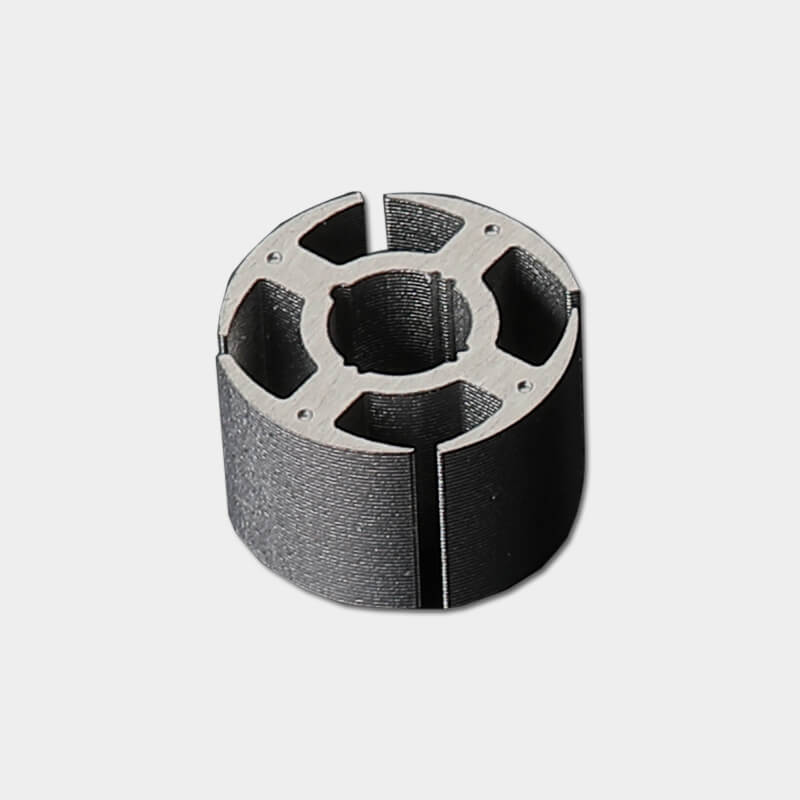
Introduction:
Metal stamping plays a crucial role in the manufacturing industry, providing cost-effective and efficient solutions for various applications. One such application is in the production of car audio diaphragm receiving device fixed brackets. These brackets are essential components in car audio systems, ensuring the stability and proper positioning of the diaphragm. In this article, we will explore the process of metal stamping for car audio diaphragm receiving device fixed brackets, its benefits, materials used, quality control measures, and common challenges in this field.
The Importance of Car Audio Diaphragm Receiving Device Fixed Brackets
Car audio diaphragm receiving device fixed brackets are vital components in audio systems installed in vehicles. These brackets securely hold the diaphragm in place, preventing unnecessary vibrations and ensuring optimal sound quality. Without reliable brackets, the diaphragm may move or become misaligned, leading to distorted audio output and potential damage to the audio system. Therefore, the role of car audio diaphragm receiving device fixed brackets in providing stability and support cannot be overlooked.
The Metal Stamping Process for Car Audio Diaphragm Receiving Device Fixed Brackets
What is Metal Stamping?
Metal stamping is a manufacturing process that involves shaping flat metal sheets into desired forms through the application of pressure. This process utilizes specialized tools and machinery, such as stamping dies and presses, to create precise and intricate components. The metal stamping technique offers high accuracy and repeatability, making it ideal for producing car audio diaphragm receiving device fixed brackets with consistent quality.
Understanding the Role of Metal Stamping in Manufacturing
Metal stamping plays a pivotal role in the manufacturing of car audio diaphragm receiving device fixed brackets. It enables the mass production of these brackets with high precision and efficiency. The metal stamping process allows manufacturers to create complex shapes and features in a cost-effective manner. With the ability to produce large quantities of brackets in a short period, metal stamping helps meet the demands of the automotive industry while maintaining consistent quality.
The metal stamping process for car audio diaphragm receiving device fixed brackets typically involves the following steps:
-
Design and Engineering:
The bracket design is created, taking into consideration the specific requirements of the car audio system. Engineers develop detailed drawings and models to guide the stamping process. -
Material Selection:
The appropriate material for the brackets is selected based on factors such as strength, durability, and cost-effectiveness. Common materials used in metal stamping for car audio diaphragm receiving device fixed brackets include stainless steel and aluminum.- Stainless Steel: Stainless steel offers excellent corrosion resistance, strength, and durability. It is widely used in metal stamping for car audio diaphragm receiving device fixed brackets due to its ability to withstand harsh environments and provide long-lasting performance.
- Aluminum: Aluminum is a lightweight material that offers good strength-to-weight ratio and corrosion resistance. It is often chosen for its ease of formability and cost-effectiveness in manufacturing car audio brackets.
-
Tool and Die Preparation:
Stamping dies, including progressive dies or transfer dies, are manufactured to shape the metal sheets into the desired bracket form. These dies consist of various components, including punches, dies, and strippers. -
Metal Sheet Feeding:
Flat metal sheets are fed into the stamping press, where they are accurately positioned for the stamping process. Feeding mechanisms ensure the correct alignment and smooth transition of metal sheets through the press. -
Stamping Process:
The stamping press applies high pressure to the metal sheets, causing them to deform and take the shape of the stamping dies. The bracket features, such as holes, bends, and flanges, are formed during this stage. -
Finishing Operations:
After the stamping process, additional operations may be performed to refine the brackets. These operations may include deburring, surface treatment, and quality inspections. -
Quality Control:
Stringent quality control measures are implemented throughout the metal stamping process to ensure the brackets meet the required specifications. Inspections, dimensional checks, and material testing are conducted to verify the quality and functionality of the brackets.
- Dimensional Inspections: Brackets are checked for dimensional accuracy and consistency using precision measuring tools such as calipers and gauges.
- Material Testing: Materials used in metal stamping are tested for quality, strength, and composition to ensure they meet the specified standards.
- Visual Inspections: Brackets undergo visual inspections to identify any surface defects, such as scratches, dents, or imperfections that may affect their functionality or aesthetics.
- Functional Testing: Brackets are subjected to functional tests to verify their performance and compatibility with the car audio system. These tests may include fitting the brackets onto the diaphragm and evaluating their stability and alignment.
Benefits of Metal Stamping for Car Audio Diaphragm Receiving Device Fixed Brackets
-
Cost-Effectiveness:
Metal stamping offers cost advantages due to its high production rates and minimal material waste. The process optimizes material usage, making it an economical choice for manufacturing car audio diaphragm receiving device fixed brackets. -
Precision and Consistency:
Metal stamping ensures precise and consistent bracket production, resulting in uniform quality across all components. This reliability is essential for maintaining the performance and longevity of car audio systems. -
Versatility:
Metal stamping allows for the creation of brackets in various shapes, sizes, and configurations. Manufacturers can customize brackets to fit specific audio system designs, ensuring compatibility and optimal performance. -
Efficiency:
The automated nature of metal stamping reduces production time and increases overall efficiency. With high-speed stamping presses and advanced die designs, manufacturers can meet demanding production schedules while maintaining quality standards.
Common Challenges
Metal stamping for car audio diaphragm receiving device fixed brackets can present certain challenges that manufacturers need to address. Some common challenges include:
-
Tooling Complexity:
The design and manufacturing of stamping dies can be complex, especially for brackets with intricate shapes or features. Proper tooling design and maintenance are essential to ensure accurate and consistent bracket production. -
Material Selection:
Choosing the right material for the brackets requires careful consideration of factors such as strength, formability, and cost. Finding the balance between these factors can be challenging to meet the desired specifications. -
Tolerance and Dimensional Control:
Achieving tight tolerances and maintaining dimensional control throughout the stamping process can be challenging. Variations in material properties, die wear, and press conditions can affect the final bracket dimensions. -
High-Volume Production:
Meeting the demands of high-volume production while maintaining quality standards and minimizing production costs is a constant challenge. Efficient production planning, optimized tooling, and effective quality control measures are essential to overcome this challenge.
Further reading: What are the common problems and causes of the metal stamping process?
Conclusion
Metal stamping plays a vital role in the production of car audio diaphragm receiving device fixed brackets, ensuring stability and proper positioning within audio systems. The process offers cost-effective manufacturing, precision, and versatility in creating brackets with high-quality standards. As technology advances, metal stamping for car audio brackets will continue to evolve, embracing new materials, automation, and sustainable practices. By adhering to best practices and overcoming challenges, manufacturers can meet the demands of the automotive industry while delivering reliable and high-performance car audio diaphragm receiving device fixed brackets.
If you have any fixed brackets or other precision metal stamping parts needs, welcome to contact us.
FAQs
What is the purpose of car audio diaphragm receiving device fixed brackets?
Car audio diaphragm receiving device fixed brackets securely hold the diaphragm in place, ensuring stability and proper positioning within the audio system. They prevent unnecessary vibrations, maintaining optimal sound quality.
What materials are commonly used in metal stamping for car audio diaphragm receiving device fixed brackets?
Common materials used include stainless steel and aluminum. Stainless steel offers excellent corrosion resistance and durability, while aluminum provides lightweight characteristics and cost-effectiveness.
How does metal stamping benefit the manufacturing of car audio diaphragm receiving device fixed brackets?
Metal stamping offers cost-effectiveness, precision, consistency, and versatility in the production of car audio diaphragm receiving device fixed brackets. It enables mass production, meets high-volume demands, and ensures uniform quality across all components.
What are the common challenges in metal stamping for car audio diaphragm receiving device fixed brackets?
Challenges include tooling complexity, material selection, tolerance and dimensional control, and meeting high-volume production demands while maintaining quality standards and minimizing costs.

Metal stamping is essential for motor core manufacturing , providing precise shaping, high-volume production, and quality control measures.

Metal stamping is essential for manufacturing pressure stabilizing gaskets, providing precise shaping, high-volume production, and quality control measures.

Learn what is copper components continuous metal stamping manufacturing, and discover its benefits, including high efficiency, cost-effectiveness, and high precision.
